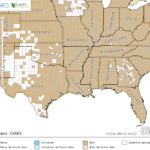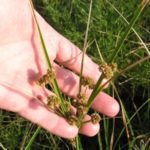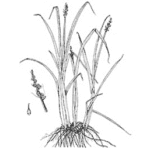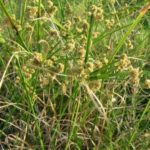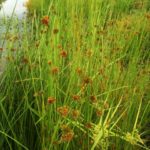Carex spp.
USDA, NRCS. 2018. The PLANTS Database (http://plants.usda.gov, 28 March 2018). National Plant Data Team, Greensboro, NC 27401-4901 USA.
Illustration courtesy of University of Florida/IFAS Center for Aquatic and Invasive Plants. Used with permission.
What are Sedges?
Physical Characteristics
Leaves:
- Well-developed
- Usually flat, but can be folded
Flowers:
- Several spikelets
- Grow from axils of upper leaves
- Some look like a head covered in spikes
- Spikelets arranged in a spiral around the axis
- Small flowers
Fruit:
- One seeded
- Does not open to release seed when ripe
Stem:
- Hollow stems
- Range from 6 inches – 4 feet tall
Roots:
- Threadlike roots
Where Does it Grow?
Sedges can be found in wet and dry conditions such as marshes or forests.
Pros and Cons of Sedges
Sedges are considered good wildlife plants. Sedges are grazed by muskrats, nutria, and rabbits; while the seeds are consumed by waterfowl and small birds. Submerged portions of all aquatic plants provide habitats for many micro and macro invertebrates. These invertebrates in turn are used as food by fish and other wildlife species (e.g. amphibians, reptiles, ducks, etc.). After aquatic plants die, their decomposition by bacteria and fungi provides food (called “detritus”) for many aquatic invertebrates.
What Type of Sedge Do I Have?
There are many types of sedges (over 100), and they are difficult to identify without using detailed botanical keys. In Texas, there are many common species of sedges, 2 of which are listed below. Click on the buttons to learn more about each individual species.

